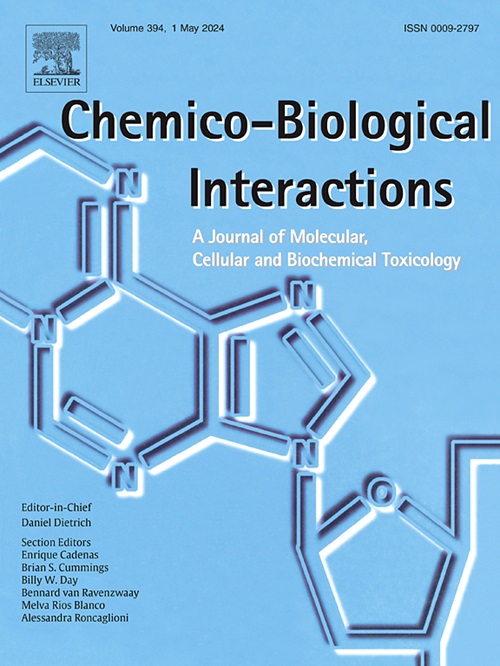揭示 4-氨基喹啉衍生物对胰腺导管腺癌(PDAC)细胞株的强效作用。
IF 4.7
2区 医学
Q1 BIOCHEMISTRY & MOLECULAR BIOLOGY
引用次数: 0
摘要
常见的抗疟药物,如青蒿素类、氯喹及其衍生物,也具有强大的抗炎、抗病毒和抗癌特性。在寻找对抗难以治疗的胰腺癌的新疗法过程中,我们发现 4-氨基喹啉衍生物具有显著的抗疟特性和良好的体内安全性,对胰腺导管腺癌(PDAC)具有显著的抗癌活性,并在体内异种移植模型中具有相当的疗效。本研究旨在以药物再利用的方式进一步研究这些化合物的抗癌特性。在二维培养细胞(体外)和斑马鱼 PDAC 异种移植模型(体内)中,这些化合物在纳摩尔至低微摩尔浓度下表现出了深远的细胞毒性效应。对其细胞毒性作用机制的深入研究表明,这些化合物在抑制自噬的同时,还能诱导细胞凋亡,同时增加活性氧水平。对自噬调节的进一步研究证明,测试的喹啉衍生物会导致 PDAC 细胞中 P62 和 LC3-II 的积累以及溶酶体碱化。此外,在斑马鱼模型中进行的体内毒性研究表明,所研究的 4-氨基喹啉类化合物毒性较低,不会对发育产生副作用。综上所述,这些结果突出表明 4-氨基喹啉类化合物具有特殊的结构,应进一步研究其在胰腺癌治疗中的潜在应用。本文章由计算机程序翻译,如有差异,请以英文原文为准。
Unveiling the 4-aminoquinoline derivatives as potent agents against pancreatic ductal adenocarcinoma (PDAC) cell lines
Common antimalarials such as artemisinins, chloroquine and their derivatives also possess potent anti-inflamantory, antiviral and anticancer properties. In the search for new therapeutics to combat difficult-to-treat pancreatic carcinomas, we unveiled that 4-aminoquinoline derivatives, with significant antiplasmodial properties and a great safety profile in vivo, have remarkable anticancer activity against pancreatic ductal adenocarcinoma (PDAC) and considerable efficacy in the xenograft model in vivo. The aim of the present study was to further investigate anticancer properties of these compounds in a drug-repurposing manner. The compounds showed profound cytotoxic effects at nanomolar to low micromolar concentration in 2D cultured cells (in vitro) and in the zebrafish PDAC xenograft model (in vivo). A deeper insight into their mechanisms of cytotoxic action showed these compounds induce apoptosis while increasing reactive oxygen species levels along with autophagy inhibition. Additional investigation of the autophagy modulation proved that tested quinoline derivatives cause P62 and LC3-II accumulation in PDAC cells alongside lysosomal alkalinization. Further, in vivo toxicity studies in the zebrafish model showed low toxicity without developmental side effects of the investigated 4-aminoquinolines, while the applied compounds effectively inhibited tumor growth and prevented the metastasis of xenografted pancreatic cells. Taken together, these results highlight the 4-aminoquinolines as privileged structures that ought to be investigated further for potential application in pancreatic carcinoma treatment.
求助全文
通过发布文献求助,成功后即可免费获取论文全文。
去求助
来源期刊
CiteScore
7.70
自引率
3.90%
发文量
410
审稿时长
36 days
期刊介绍:
Chemico-Biological Interactions publishes research reports and review articles that examine the molecular, cellular, and/or biochemical basis of toxicologically relevant outcomes. Special emphasis is placed on toxicological mechanisms associated with interactions between chemicals and biological systems. Outcomes may include all traditional endpoints caused by synthetic or naturally occurring chemicals, both in vivo and in vitro. Endpoints of interest include, but are not limited to carcinogenesis, mutagenesis, respiratory toxicology, neurotoxicology, reproductive and developmental toxicology, and immunotoxicology.

 求助内容:
求助内容: 应助结果提醒方式:
应助结果提醒方式:


